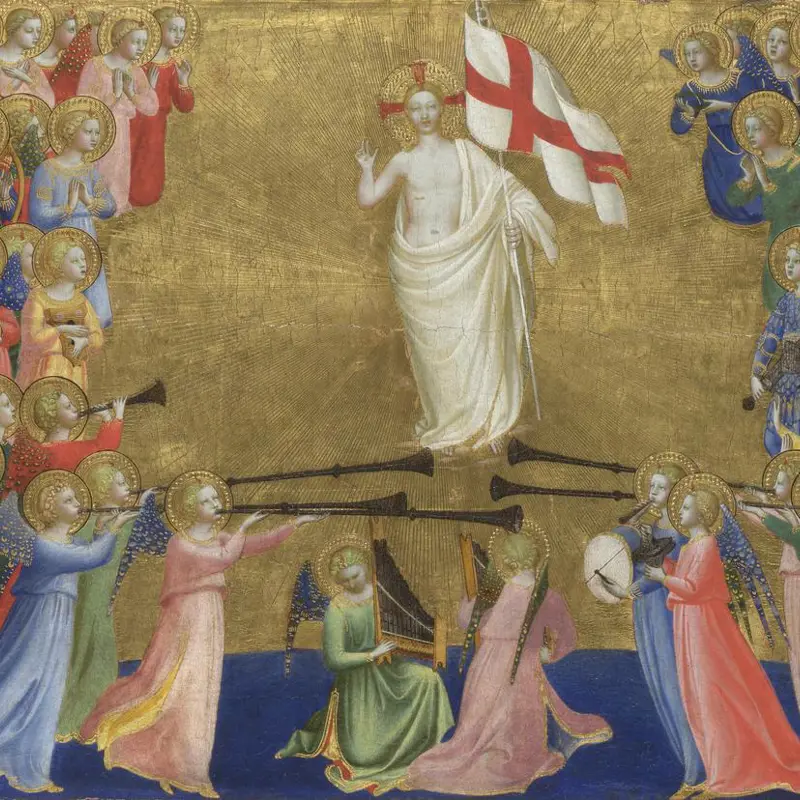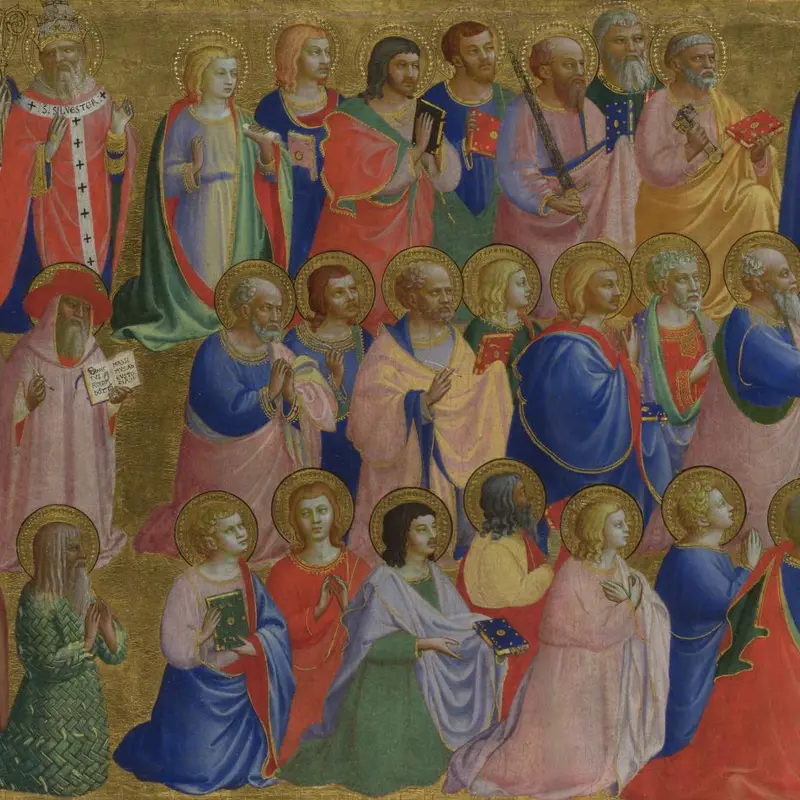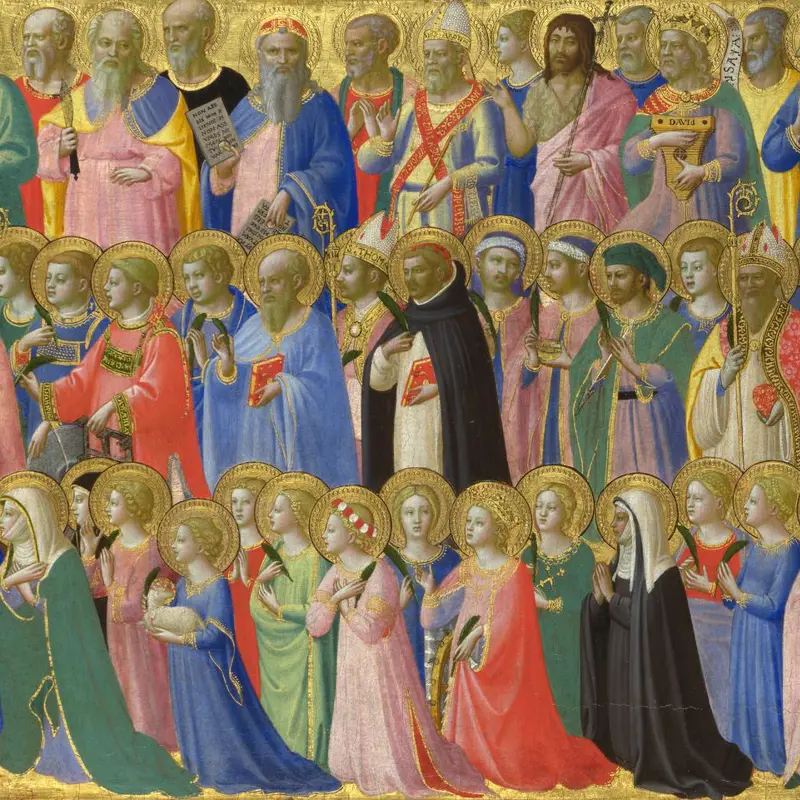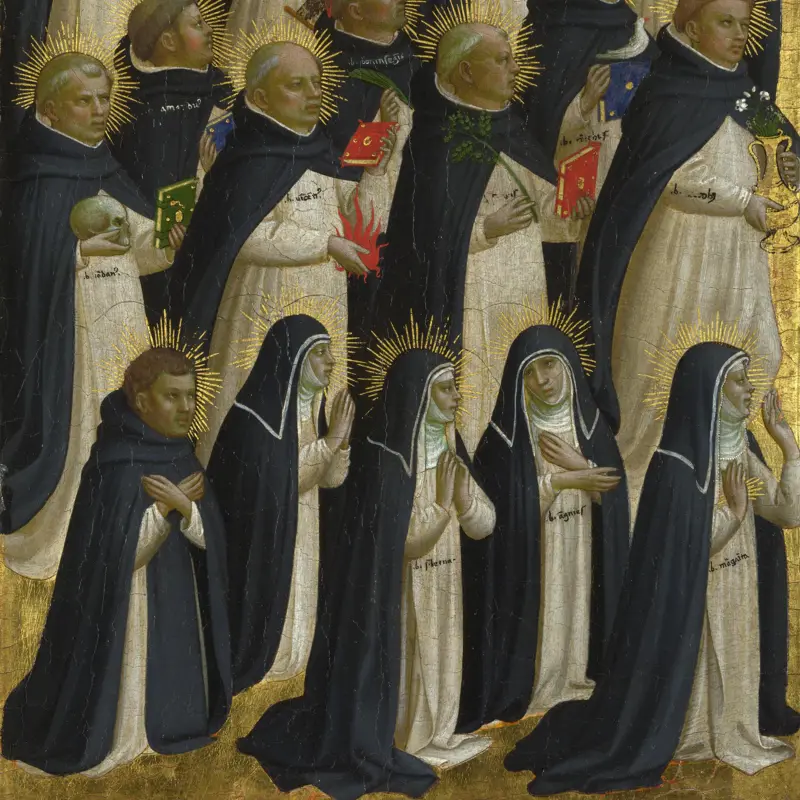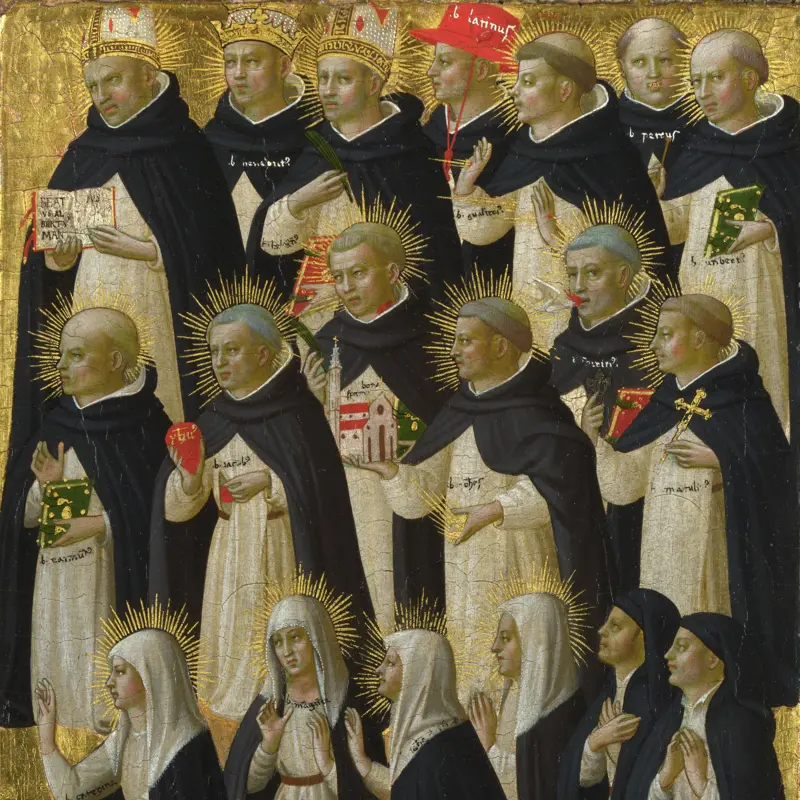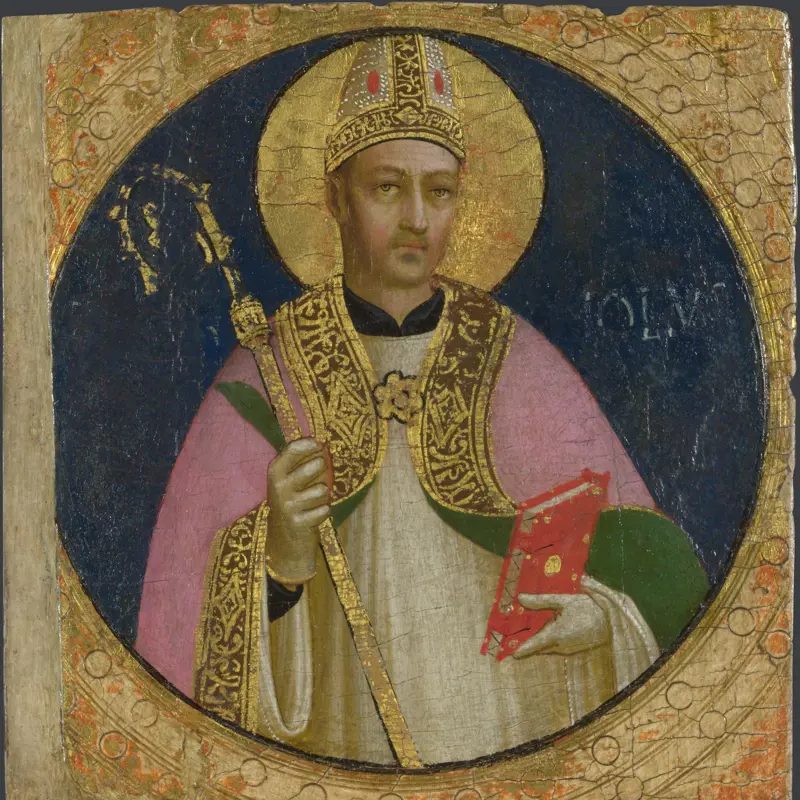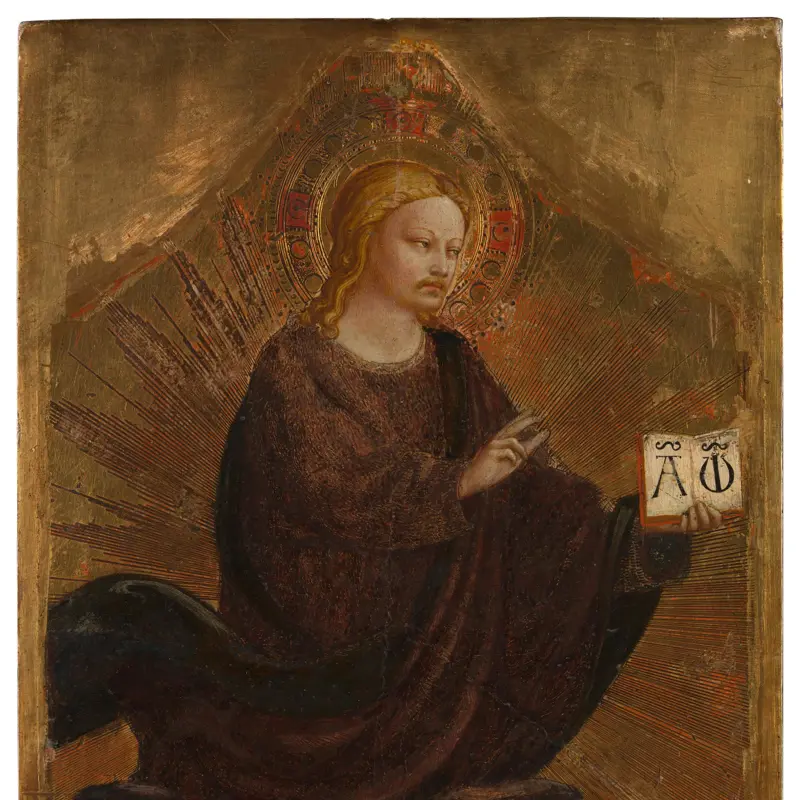Fra Angelico, 'Saint Romulus: Frame Panel', about 1423-4
About the work
Overview
We can piece together who this saint is: his mitre (hat) and crosier (crook) identify him as a bishop, and a faint inscription in white paint to his right reads ‘OL VS’. The inscription on the left probably read ‘ROM’, identifying him when both sides were put together as Romulus.
This seems likely. Romulus was the patron saint of Fiesole, a town near Florence, and this panel probably came from an altarpiece made for the church of San Domenico in Fiesole. It probably decorated one of the altarpiece’s pilasters (the tall piers on either side of the construction). Another panel of exactly the same design, showing the bishop-saint Alexander, was probably its pair, appearing on the opposite pier.
The National Gallery also holds two images from the base of the pilasters and panels from the predella (the lowest part of the altarpiece).
Key facts
Details
- Full title
- Saint Romulus: Frame Panel
- Artist
- Fra Angelico
- Artist dates
- Active 1417; died 1455
- Part of the series
- Fiesole San Domenico Altarpiece
- Date made
- About 1423-4
- Medium and support
- Egg tempera on wood (probably poplar)
- Dimensions
- 16 × 15.6 cm
- Inscription summary
- Inscribed
- Acquisition credit
- Bequeathed by Lady Lindsay, 1912
- Inventory number
- NG2908
- Location
- On loan: Angelico, Museo di San Marco, Florence, Italy
- Collection
- Main Collection
Provenance
Additional information
Text extracted from the ‘Provenance’ section of the catalogue entry in Dillian Gordon, ‘National Gallery Catalogues: The Fifteenth Century Italian Paintings’, vol. 1, London 2003; for further information, see the full catalogue entry.
Exhibition history
-
2011Devotion by Design: Italian Altarpieces before 1500The National Gallery (London)6 July 2011 - 2 October 2011
-
2019Fra Angelico and the Rise of the Florentine RenaissanceMuseo Nacional del Prado28 May 2019 - 15 September 2019
-
2025AngelicoMuseo di San Marco26 September 2025 - 25 January 2026
Bibliography
-
1923R. van Marle, The Development of the Italian Schools of Painting, 19 vols, The Hague 1923
-
1951Davies, Martin, National Gallery Catalogues: The Earlier Italian Schools, London 1951
-
1958M. Salmi, Il Beato Angelico, Spoleto 1958
-
1961M. Davies, The Earlier Italian Schools, 2nd edn, London 1961
-
1963B. Berenson, Italian Pictures of the Renaissance: A List of the Principal Artists and Their Work, with an Index of Places: Florentine School, 2 vols, New York 1963
-
1970U. Baldini, L'opera completa dell' Angelico, Milan 1970
-
1974J. Pope-Hennessy, Fra Angelico, 2nd edn, London 1974
-
1976P.J. Cardile, Fra Angelico and His Workshop at San Domenicoin Fiesole (1420-1435): The Development of His Style and the Formation of His Workshop, Phd Thesis, Yale University 1976
-
1977U. Baldini, 'Contributi all'Angelico: Il Trittico di San Domenico di Fiesole e qualche attra aggiunta', in Scritti di storia dell'arte in onore di Ugo Procacci, Milan 1977, pp. 236-45
-
1986Davies, Martin, National Gallery Catalogues: The Earlier Italian Schools, revised edn, London 1986
-
1994L. Kanter et al., Painting and Illumination in Early Renaissance Florence 1300-1450 (exh. cat. Metropolitan Museum of Art, 17 November 1994 - 26 February 1995), New York 1994
-
1997C. Gardner von Teuffel, 'Fra Angelico's Bishop Saints from the High Altar of S. Domenico, Fiesole', The Burlington Magazine, CXXXIX/1132, 1997, pp. 463-5
-
2001
C. Baker and T. Henry, The National Gallery: Complete Illustrated Catalogue, London 2001
-
2003Gordon, Dillian, National Gallery Catalogues: The Fifteenth Century Italian Paintings, 1, London 2003
About this record
If you know more about this work or have spotted an error, please contact us. Please note that exhibition histories are listed from 2009 onwards. Bibliographies may not be complete; more comprehensive information is available in the National Gallery Library.
Images
About the series: Fiesole San Domenico Altarpiece
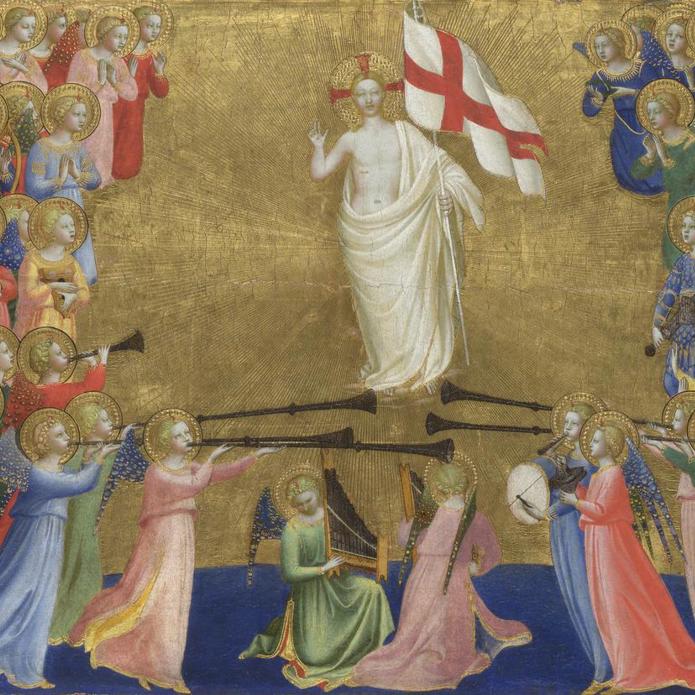
Overview
These panels come from the predella (lowest part) of the altarpiece made for the high altar of San Domenico, Fiesole. Fra Angelico was a Dominican friar (a member of the religious order founded by Saint Dominic) as well as a painter. The church was attached to his own convent – so although he made two other altarpieces for it, he was not paid for his work.
Predellas usually showed narrative scenes of the lives of the saints who were depicted in the main part of the altarpiece. This one is unusual: it shows Christ in glory in heaven, surrounded in the central scene by angels. This is framed by two panels showing rows of saints and Old Testament figures. These in turn are enclosed on either side by Dominican ‘Blessed’ figures who were holy and revered but not saints.
The mass of saints includes Dominicans and reflects their interest in the saints of their order and the place of the Dominicans in the broader church.

